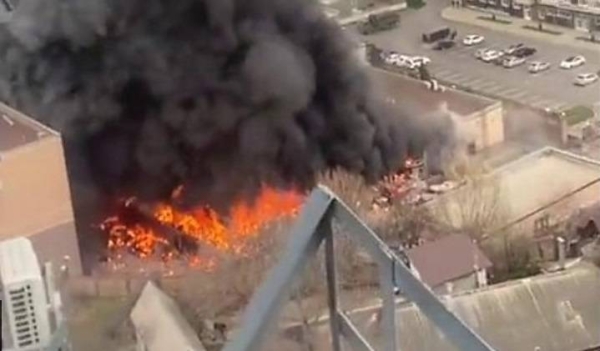
Myanmar are building security bases on top of razed Rohingya villages, said Amnesty International on Monday, accusing authorities of a “land grab”.
A new Amnesty report, "Remaking Rakhine State", uses satellite imagery and interviews to point to a rapid increase in military infrastructure and other construction since the start of the year that researchers say amounts to a "land grab".
“What we are seeing in Rakhine State is a land grab by the military on a dramatic scale,” Tirana Hassan, Amnesty’s crisis response director, said in a statement. “New bases are being erected to house the very same security forces that have committed crimes against humanity against Rohingya.”
"In some instances there has been the destruction of existing homes."
A United Nations investigator also confirmed the satellite images, while the Myanmar ambassador in Geneva said bulldozing is designed to prepare for return of those who fled.
At least four mosques that had not been wrecked by fire have been destroyed, or had their roofing or other materials removed, since late December, a time when significant conflict was not reported in the area, Amnesty said.
In one Rohingya village, satellite imagery showed buildings for a new border police post appearing next to where a recently demolished mosque had stood.
In one case, Rohingya villagers who had remained in Myanmar were forcibly evicted to make way for a base, it said.
Nearly 700,000 Rohingya Muslims have fled northern Rakhine state to Bangladesh since Myanmar launched a brutal crackdown on insurgents six months ago that the US and UN have called ethnic cleansing.
Myanmar rejects that term, saying it was responding to attacks by the Arakan Rohingya Salvation Army in late August.
But critics accuse the military of using the insurgent attacks to launch disproportionate, scorched-earth "clearance operations" as a pretext to push out the loathed minority.
"The military is not only building security force bases and roads but also bulldozing everything including house, trees, landmarks and even graveyards," said Mohammad Ali, a Rohingya resident of Buthidaung town in northern Rakhine.
Though admitting the images only paint a partial picture, Amnesty said structures for security forces, helipads and even roads have been built in and around torched Rohingya properties.
Satellite imagery of one village called Kan Kya on the outskirts of Rakhines Maungdaw town taken two months after the August attacks shows a settlement scarred by fire.
But by early March buildings could be seen on the revamped land. Amnesty believes they are part of a new base for security forces.
Similar building activity was also detected in Inn Din village, where Myanmar has admitted that its security forces took part in the killings of 10 Rohingya residents in September.
Amnesty said Myanmar’s “reshaping” of the region where the Rohingya lived appeared to be designed to accommodate more security forces and non-Rohingya villagers, and could deter refugees from agreeing to return.
“Rohingya who fled death and destruction at the hands of the security forces are unlikely to find the prospect of living in close proximity to those same forces conducive to a safe return,” the group said, “especially given the continuing lack of accountability for human rights violations.”
Rakhine state has been largely sealed off from rights groups, the media and UN investigators.
Myanmar and Bangladesh were supposed to start repatriating Rohingya refugees in late January but many are reluctant to return to a place without guarantees of basic rights and safety.
The report also highlights concerns that abandoned Rohingya land will be set aside for ethnic Rakhine Buddhists and other non-Muslim groups in the area, and that alterations to the landscape will erase evidence of alleged atrocities by the military.
Spokespeople for the government of Nobel laureate Aung San Suu Kyi and the military were not immediately available for comment. Myanmar officials have said villages were being bulldozed to make way for new homes for returning refugees.
Zaw Htay, a government spokesman, said the government was not basing military forces in residential areas but that police stations were part of village construction plans.
"Its not true that we are deploying the military among houses and among villages," he said, adding that bulldozing is necessary to work on burned land. "As this region is behind in development, we are rebuilding systematically."












